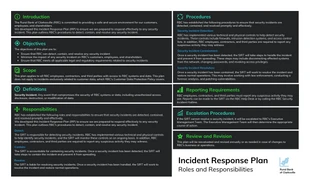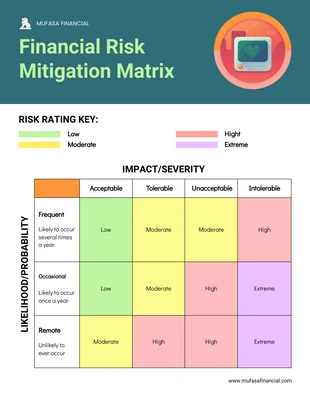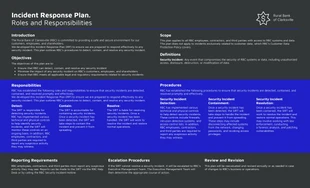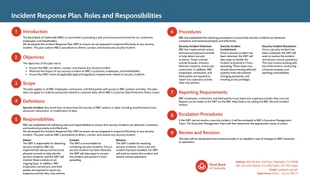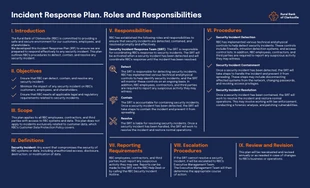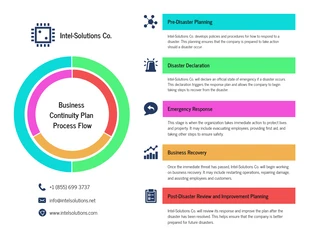
Incident Response Plan Template
Get ready to protect your business from the consequences of a security breach or other emergencies. Customize this incident response plan template.
100% customizable templates
Millions of photos, icons, charts and graphics
AI-powered editing features
Effortlessly share, download, embed and publish
Easily generate QR codes for your designs
- Design stylemodern, fun
- Colorsvibrant
- SizeLetter (11 x 8.5 in)
- File typePNG, PDF, PowerPoint
- Planpremium
In any business, data is one of the most critical assets. It helps enterprises make better decisions, understand clients, and optimize operations. You can harness data to improve customer service, target marketing efforts, and track performance. As information is valuable, we must store it securely and efficiently. There are several different ways to store data, both physically and electronically. Physical data storage includes hard drives, CDs, or tapes, while electronic data storage includes servers, clouds, or databases. When choosing a data storage method, it is essential to consider security, cost, efficiency, and scalability. Security is a top priority when it comes to data storage. Data breaches can devastate businesses, and lead to financial loss, reputational damage, and legal liability. Companies manage these risks by implementing robust security measures: installing firewalls and antivirus software, ensuring that only authorized users have access to sensitive data and encrypting data. Developing an incident response plan is another important step in protecting data. An incident response plan is a set of procedures we should follow during a security breach or other emergency. The goal of an incident response plan

